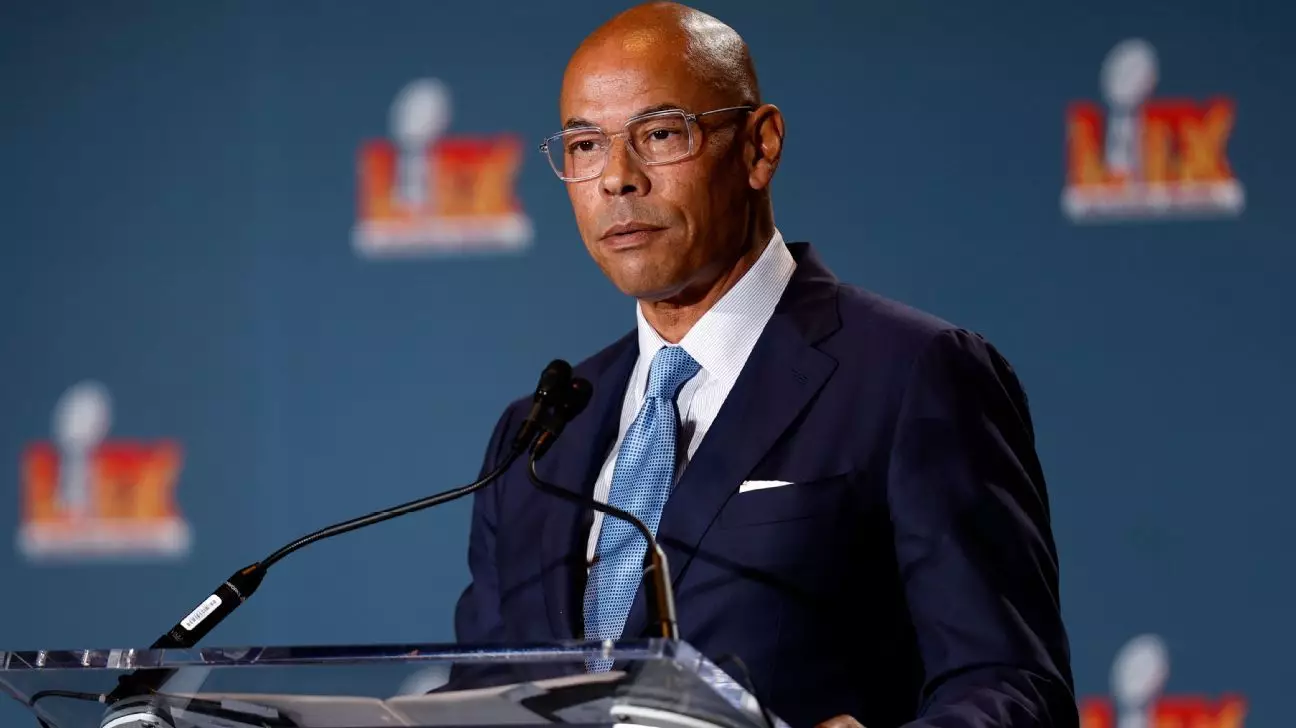The latest developments within the NFL Players Association (NFLPA) reveal a complex tapestry of internal conflicts, leadership challenges, and the fragile balance of power between player representation and organizational stability. At the heart of these issues lies the contentious situation involving NFLPA Executive Director Lloyd Howell Jr., whose actions and associations are now under scrutiny. The union’s strong denials of any resignation demands for Howell are, on the surface, an assertion of unity. Still, beneath this veneer, there’s a palpable undercurrent of unease about accountability and transparency. The union’s unwavering public support for Howell raises questions about whether they genuinely believe in his leadership or are simply attempting to shield internal fractures from public view.
The NFLPA’s leadership appears to be caught in a paradox: on one hand, claiming a commitment to due process and careful assessment, and on the other, shielding their director from external scrutiny. This disparity suggests an underlying tension—an effort to maintain stability while navigating the turbulence of internal dissent. To truly serve players’ best interests, the union must confront its vulnerabilities openly instead of hiding behind strategic communications that could undermine the integrity of the collective bargaining process.
Conflicts of Interest and the Role of Private Equity
A particularly alarming aspect of this controversy stems from Howell’s supposed engagement as a paid, part-time consultant for the Carlyle Group—a private equity firm. Given the NFL’s complex financial ecosystem and the professional stakes involved, such a connection fosters an environment ripe for conflicts of interest. The union’s apparent concern about Howell’s involvement—prompting calls for him to resign—indicate that questions of bias and impartiality are pivotal.
In an industry where player welfare and fair negotiations are paramount, any alignment with private interests, especially one engaged in seeking minority ownership stake in NFL teams, threatens to compromise the union’s integrity. Howell’s refusal to step down reflects either confidence in his capacity to manage conflicts or possibly a dismissive attitude toward the union’s emphasis on transparency. Either possibility is troubling, as the union’s credibility in defending players hinges on clear, conflict-free leadership.
This situation underscores a broader issue: the power dynamics between league-approved financial entities and the players’ collective voice. When union leaders have personal or financial ties to external organizations involved in the league’s wider economic ecosystem, trust diminishes. Players deserve leaders who prioritize their interests unequivocally, free from outside influence and perceived conflicts.
Secrecy and Lack of Transparency in Critical Decisions
Further complicating the narrative is the issue of confidentiality surrounding arbitration decisions and internal negotiations. The NFLPA’s decision to keep details of a significant arbitration ruling from the players illustrates a troubling precedent: the tendency toward secrecy within union operations. This approach diminishes the players’ ability to fully understand and assess the league’s stance on critical issues—such as guaranteed compensation and corporate collusion.
The arbitration decision, which found evidence of league executives encouraging teams to reduce guaranteed player payments, should have been transparent and accessible to those it directly affects. Instead, a confidentiality agreement kept these findings from players until an independent podcast revealed them months later. This opacity raises profound questions about the union’s commitment to honest disclosure and accountability, especially when the stakes concern contractual and financial fairness.
The union’s attempt to appeal the arbitration ruling reflects a strategic maneuver aimed at protecting league interests rather than solely advocating for players. Such actions suggest that, although the NFLPA claims to serve as a bastion of player rights, it often operates behind closed doors, prioritizing secrecy over transparency. This dissonance between rhetoric and practice potentially erodes trust and undermines the collective bargaining process, suggesting that leadership may be more aligned with league power brokers than with the athletes they represent.
A Leadership That Must Be Held Accountable
The appointment of Howell as the NFLPA’s executive director marked a new chapter for the union. Yet, his rapid rise and the controversies surrounding him highlight the importance of rigorous oversight and accountability. Players and stakeholders alike must question whether the leadership team is robust enough to navigate these turbulent waters without sacrificing core principles.
The involvement of prominent legal figures, such as Ronald C. Machen, tasked with reviewing Howell’s activities, signals some recognition of the potential pitfalls of leadership missteps. However, the mere fact that such review is necessary points to deeper issues within the union’s governance. Leadership should not merely be reactive, managing crises after they unfold. Instead, proactive transparency, ethical conduct, and unwavering dedication to the players’ best interests are essential to restoring faith in the organization.
The NFLPA stands at a crossroads: either evolve into a genuinely transparent, accountable advocate for players or risk further erosion of its credibility. Leadership that shies away from scrutiny and internal conflicts will only deepen divisions and make it harder to unite the players in pursuit of fair treatment and equitable negotiations. Trust is hard-earned, and in this moment, the NFLPA must decide whether it will prioritize genuine integrity or continue merely paying lip service to transparency.
—
This analysis underscores a critical need for the NFLPA to reflect on its leadership’s integrity, prioritize transparency, and fully commit to protecting the interests of its players above all. Only then can it truly embody the union’s core mission and restore the trust that is vital for effective advocacy.


Leave a Reply